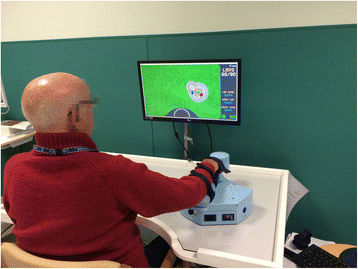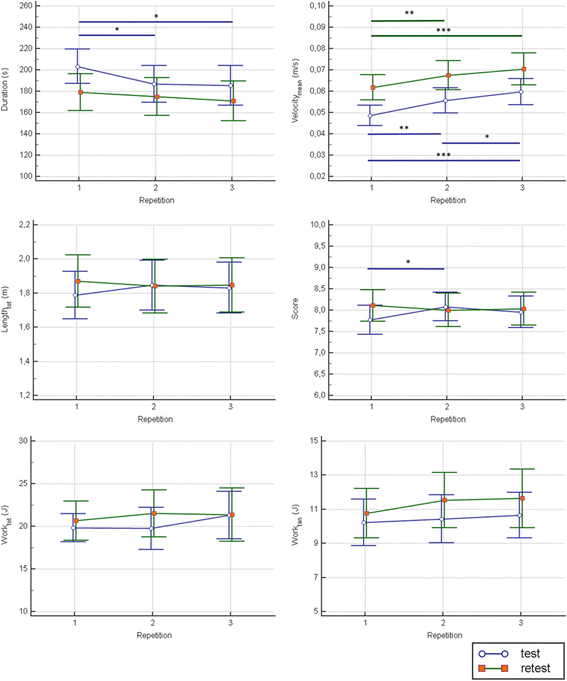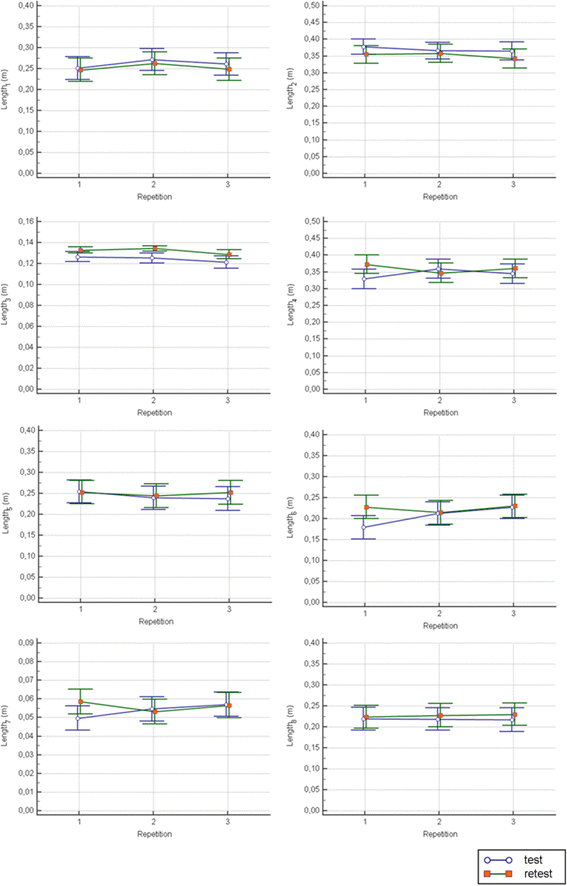Reliability, validity and discriminant ability of the instrumental indices provided by a novel planar robotic device for upper limb rehabilitation
- PMID: 29769127
- PMCID: PMC5956822
- DOI: 10.1186/s12984-018-0385-8
Reliability, validity and discriminant ability of the instrumental indices provided by a novel planar robotic device for upper limb rehabilitation
Abstract
Background: In the last few years, there has been an increasing interest in the use of robotic devices to objectively quantify motor performance of patients after brain damage. Although these robot-derived measures can potentially add meaningful information about the patient's dexterity, as well as be used as outcome measurements after the rehabilitation treatment, they need to be validated before being used in clinical practice. The present work aims to evaluate the reliability, the validity and the discriminant ability of the metrics provided by a novel robotic device for upper limb rehabilitation.
Methods: Forty-eight patients with sub-acute stroke and 40 age-matched healthy subjects were involved in this study. Clinical evaluation included: Fugl-Meyer Assessment for the upper limb, Action Research Arm Test, and Barthel Index. Robotic evaluation of the upper limb performance consisted of 14 measures of motor ability quantifying the dexterity in performing planar reaching movements. Patients were evaluated twice, one day apart, to assess the reliability of the robotic metrics, using the Intraclass Correlation Coefficient. Validity was assessed by analyzing the correlation of the robotic metrics with the clinical scales, by means of the Spearman's Correlation Coefficient. Finally, the ability of the robotic metrics to distinguish between patients with stroke and healthy subjects was investigated with t-tests and the Effect Size.
Results: Reliability was found to be excellent for 12 measures and from moderate to good for the remaining 2. Most of the robotic indices were strongly correlated with the clinical scales, while a few showed a moderate correlation and only one was not correlated with the Barthel Index and weakly correlated with the remain two. Finally, all but one the provided metrics were able to discriminate between the two groups, with large effect sizes for most of them.
Conclusion: We found that all the robotic indices except one provided by a novel robotic device for upper limb rehabilitation are reliable, sensitive and strongly correlated both with motor and disability clinical scales. Therefore, this device is suitable as evaluation tool for the upper limb motor performance of patients with sub-acute stroke in clinical practice.
Trial registration: NCT02879279 .
Keywords: Discriminant ability; Reliability; Robot-mediated evaluation; Stroke; Upper limb; Validity.
Conflict of interest statement
Ethics approval and consent to participate
The present study was approved by the institutional ethics committee (FDG_6.4.2016). All participants provided written informed consent in accordance with ethical guidelines.
Consent for publication
All authors have approved the manuscript for publication.
Competing interests
The authors declare that they have no competing interests.
Publisher’s Note
Springer Nature remains neutral with regard to jurisdictional claims in published maps and institutional affiliations.
Figures






References
Publication types
MeSH terms
Associated data
LinkOut - more resources
Full Text Sources
Other Literature Sources
Medical

